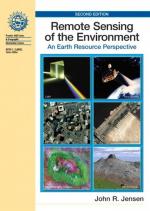|
This section contains 4,100 words (approx. 14 pages at 300 words per page) |

|
International research efforts have been undertaken to study the complex and interconnected processes that affect Earth's atmosphere, oceans, and land. Essential information for this research is provided by fleets of satellites and aircraft equipped with sensors that collect enormous amounts of Earth data. These systems are called remote sensing systems.
The variety of data that can be obtained through remote sensing systems is vast. The world scientific community uses remote sensing systems to obtain information about ocean temperature, water levels and currents, wind speed, vegetation density, ice sheet size, the extent of snow cover, rainfall amounts, aerosol concentrations in the atmosphere, ozone levels in the stratosphere, and many other important variables to better understand how natural phenomena and human activities impact global climate. Remote sensing systems may also be used by decision makers such as environmental resource managers, city planners, farmers, foresters and many...
|
This section contains 4,100 words (approx. 14 pages at 300 words per page) |

|


